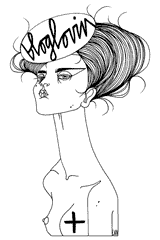I was recently asked to write an article for the Feminist and Women's Studies Association Blog. I wrote an article on the revolutionising of women's fashion and the effect that Coco Chanel had on women's fashion. It was such an honour to be asked to write for this organisation and something I feel personally very proud of.
The FWSA is a UK based association that focuses on promoting the feminist teaching and research and studies, nationally and internationally. They run a blog which invites people from everywhere to write article on a number of subjects from book reviews, to the media and the arts to events and projects - all with a feminist concern/idea at the heart of it.
You can read my article here - I've also included it below. Please have a read and let me know your thoughts.
I see fashion as an art form. An art form that we not only wear, but that changes continuously with our society: reflecting the influences within the media along with the economic situation. Women’s fashion has been, and still is, directly linked with our fight for freedom. It reflects our ever-changing position within society: the power, the repression, the sexism and the ‘stereotypes.’ Throughout history women’s fashion has been used as a tool for women and as our rights changed, so did our clothing. The revolution and liberation of women’s fashion bottles down to just a few individuals, one notably being Coco Chanel as she reformed the perceptions of women’s fashion and evolved the way feminism is explored through our clothing.
 Towards the beginning of the 20th Century women’s fashion began to change dramatically, the turn of the century opened up to simplicity and with women’s fight for independence clothing moved to be more practical, free and above all feminine, a huge contrast from the confined and restricted frills and corsets of the 19thCentury. 1906 saw the decline of the train on women’s dresses, and soon enough hems began to rise (above the ankle.) Four years later in 1910 fashion began to focus on emphasising the female structure more, think hips and waist, and just one year later in 1911 the world began to see the attractiveness of slender bodies. However it should be noted that women were still being forced into specific and idealistic body types as a response to societies ever changing demand for the “ideal woman.”
Towards the beginning of the 20th Century women’s fashion began to change dramatically, the turn of the century opened up to simplicity and with women’s fight for independence clothing moved to be more practical, free and above all feminine, a huge contrast from the confined and restricted frills and corsets of the 19thCentury. 1906 saw the decline of the train on women’s dresses, and soon enough hems began to rise (above the ankle.) Four years later in 1910 fashion began to focus on emphasising the female structure more, think hips and waist, and just one year later in 1911 the world began to see the attractiveness of slender bodies. However it should be noted that women were still being forced into specific and idealistic body types as a response to societies ever changing demand for the “ideal woman.”






